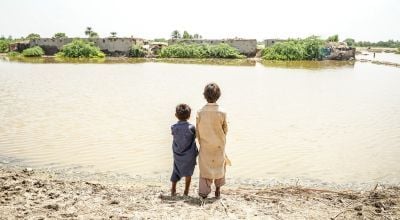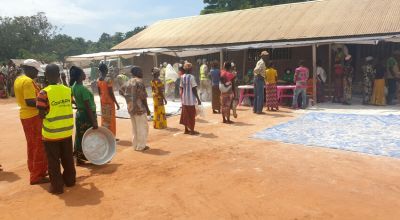
Knowledge Hub
How is the current cost of living crisis affecting families around the world?
Since 2021, the cost of living in the UK has steadily increased, with the annual rate of inflation reaching its peak at 11.1% in October 2022, a 41 year high. According to a PwC survey, 86% of UK adults say they are concerned about day-to-day living costs, with lower income families being most at risk from increases in the prices of energy, food and fuel, all of which can adversely affect quality of life.
Here, in the UK, talk of the cost of living crisis naturally centres on how families are struggling with daily life. However, the cost of living crisis also affects communities living in poorer countries, with an estimated 71 million people falling into poverty as a result of rising food and fuel prices.
We want to highlight how these crises are linked together and how specific communities are coping with financial hardships.
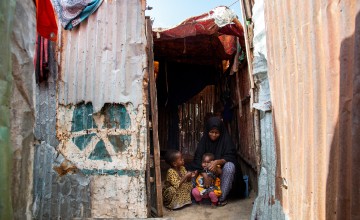
What are the reasons behind the cost of living crisis?
The primary causes behind the global cost of living crisis centre around the effects of the conflict in Ukraine, as well as the lingering impacts from the Covid-19 pandemic. Before the start of the conflict in February 2022, Ukraine was the fifth largest wheat producer and the largest sunflower oil producer in the world, with the majority being exported by ship via the Black Sea. However, Ukraine’s major ports have struggled with blockades that have impeded the export of grain and impacted the global food supply chain. Although some work has been made on easing the blockade, there are still severe obstacles that continue to drive a steep increase in food prices.
The Covid-19 pandemic further exasperated the economic crisis, causing great economic harm and impacting the standard of living in poor communities. Livelihoods were lost or disrupted, healthcare systems struggled under the weight of the disease and global unemployment rose as economic growth slowed. Even within wealthier countries, the pandemic disproportionately affected people with low incomes.
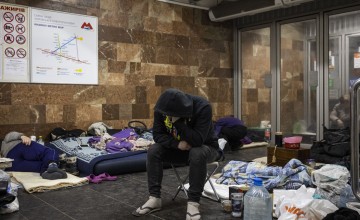
Cost of living and the East Africa hunger crisis
East Africa is currently experiencing one of the worst hunger crises in recent years. After five consecutive failed rainy seasons, with a sixth predicted this spring, more than 35 million people across Ethiopia, Kenya, Somalia and South Sudan need assistance as they face life threatening hunger.
The hunger crisis is destroying livelihoods across East Africa, with millions of people leaving their homes and villages to find food, water and pasture. While the region has faced famine and drought in its past due to environmental reasons, this current crisis is compounded by the Ukraine conflict.
The current conflict in Ukraine has exacerbated the situation; Ukraine and the Russian Federation provide around 30 per cent of the world’s wheat and barley, one fifth of its maize, and over half of its sunflower oil. East Africa is one of the regions hardest hit by the ongoing conflict. Somalia, for example, imports 90% of wheat from Russia and Ukraine. As the conflict in Ukraine continues, prices of wheat and fuel steadily climb, which leads to sustained high inflation, with some countries in East Africa experiencing double digit inflation.
To add to this, the ongoing drought, which has been worsened by climate change, is proving to be catastrophic for affected families already living in extreme poverty. Across the region, five million children are now acutely malnourished in the areas affected by drought. High inflation means that governments struggle with already limited resources to provide support to communities shouldering the burden of the hunger crisis.
The region has long been hindered by a severely restricted healthcare system that struggles with challenges stemming from already high levels of infant mortality, malnutrition and infectious diseases. As a result of these pressures, more than a million people have left their homes in search of food, pasture, water and jobs, which unfortunately increases the risk of inter-communal conflict.

Other regions affected by the cost of living crisis
The cost of living crisis has proved debilitating for other parts of the world too. In 2022, protests against rising inflation and the cost of living rocked Freetown, the capital of Sierra Leone. At least 21 civilians died as crowds took to the streets to protest prices of basic goods and fuel.
Before the earthquakes that devastated Turkey, many people were already wrestling with the financial stresses of high inflation. Last year inflation rose to a peak of 88%, before falling to around 55% in February 2023. Small businesses and those seeking employment were badly hit by the economic climate, with many people grappling with affording basic goods. Now, as Turkey deals with the aftermath of the devastating earthquakes that killed more than 55,000 people and destroyed thousands of buildings, it is also contending with an additional financial crisis that will limit the abilities of communities to recover and rebuild.
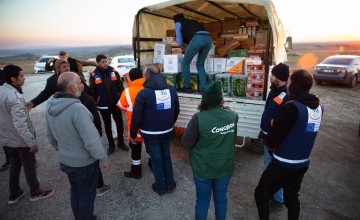
Our response
To help vulnerable communities in Turkey and across parts of East Africa survive their respective ongoing crises, Concern staff are on the ground working with local authorities and other partners to help vulnerable people.
In Turkey, our team is supporting affected communities with nutrition assistance, shelter and healthcare. Concern Worldwide are working in Adiyaman, a city in south eastern Turkey, to assess the needs and design an effective plan to support people living in the city with recovery. “Shelter for those left homeless by the earthquake will be a major priority, along with water and sanitation services, food, and essential household item,” according to Concern Programme Director, Ali Fuat Sutlu.
In East Africa, we have been providing vulnerable communities with Ready to Use Therapeutic Food (RUFT) to support 2,600 malnourished children per month in Somalia, as well as cash transfers to help people purchase food and essential goods from local vendors.
We’re fighting to prevent the situation getting worse, but we need your help.



